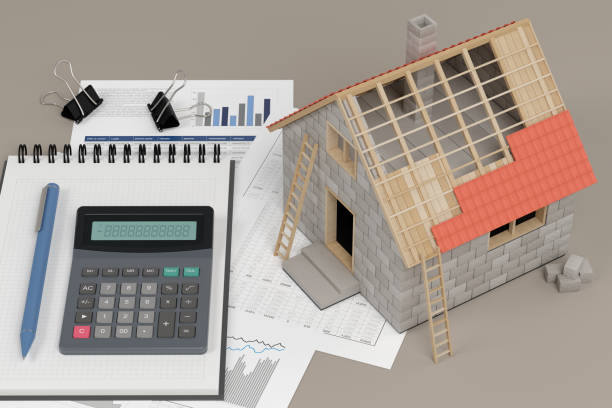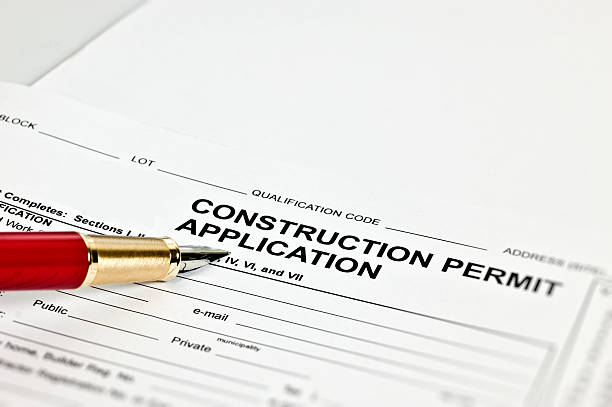
Determining a realistic budget for building on land is a crucial step for individuals or families looking to turn their dream of a custom-built home into a reality. Budget planning plays a significant role in the successful completion of a construction project, ensuring that financial resources are allocated efficiently and effectively.
Creating a budget for building on land involves a comprehensive evaluation of various factors, such as the cost of land acquisition, site preparation, materials, labor, permits, and unexpected expenses. By accurately assessing these elements, prospective homeowners can avoid financial setbacks and plan for contingencies that may arise during the construction process.
For those interested in sustainable building practices, landscaping concepts, and enlisting the expertise of professionals in the field, understanding how to establish a realistic budget is the cornerstone of a well-executed project. It not only sets the financial parameters for the endeavor but also guides decision-making processes and ensures that the vision for the property aligns with practical financial considerations.
In this blog post, we delve into the significance of determining a feasible budget for building on land, catering to the needs of aspiring homeowners seeking guidance on navigating the complexities of budgeting, sustainable construction practices, and collaborating with industry professionals to bring their vision to life.
Understanding Land Costs
When it comes to determining a realistic budget for building on land, understanding the various factors that influence land costs is crucial. Factors such as location, size, zoning regulations, and access to utilities play a significant role in determining the overall cost of building on a piece of land.
Location Impact on Land Cost
The location of the land is a key determinant of its price. Proximity to amenities such as schools, shopping centers, hospitals, and transportation hubs can significantly impact the cost of the land. Land situated in prime locations with good access to infrastructure tends to be more expensive than land in remote areas. For example, a plot of land in a bustling city center will command a higher price than a similar-sized plot in a rural area due to the convenience and amenities available in the city.
Size and Zoning Considerations
The size of the land and its zoning regulations are important factors to consider when budgeting for building on land. Larger parcels of land generally come with a higher price tag, as they offer more space for construction and landscaping. Zoning regulations dictate how the land can be used and what type of structures can be built on it. Understanding zoning laws and restrictions is essential to avoid costly mistakes and ensure compliance with local regulations. For instance, land designated for residential use may have different zoning regulations than land zoned for commercial purposes, impacting the cost of construction and overall project budget.
Before purchasing land, conducting thorough research on these factors is crucial for setting a realistic budget and avoiding unexpected expenses during the construction process. By understanding how location, size, zoning regulations, and access to utilities influence land costs, prospective buyers can make informed decisions and plan for a successful building project.
For more in-depth information on factors affecting land value, you can refer to articles like Top 10 Factors affecting Land Value to gain insights into the intricacies of land valuation and pricing strategies.
Budgeting for Land Preparation
Before diving into your dream building project, it’s crucial to consider the expenses associated with preparing the land. Understanding the costs involved in land preparation helps you create a realistic budget and avoid surprises down the road.
Land Clearing and Grading Costs
Land clearing and grading are essential steps in preparing a construction site. Costs for clearing land can vary based on factors like the size of the lot and the extent of vegetation. On average, the cost can range from $200 to $2,000 per acre. Grading the land to meet construction requirements adds another layer of expense, averaging around $6 to $43 per square foot.
To minimize costs while ensuring quality work, consider:
- Obtaining multiple quotes from land clearing and grading professionals to compare prices.
- Opting for selective clearing rather than clearing the entire site.
- Reusing cleared vegetation for landscaping or mulch to reduce waste removal expenses.
- Timing the land preparation during the offseason when contractors may offer discounts.
For more detailed information on land clearing and building site preparation costs, check out How much does it cost to clear land to build a house? and What does it cost to prepare land for building?.
Soil Testing and Utility Hookups
Soil testing is a crucial step before construction begins. It helps determine the soil composition, stability, and suitability for building foundations. Additionally, budgeting for utility hookups such as water, electricity, and sewer systems is essential for a functional property.
By conducting soil tests, you can:
- Identify any soil issues that may impact the stability of your future home.
- Determine the type of foundation required based on soil conditions.
- Plan for any necessary soil amendments or stabilizations.
When budgeting for utility hookups, consider:
- Getting multiple quotes from utility companies to compare costs.
- Exploring energy-efficient options to reduce long-term utility expenses.
- Bundling utility connections to potentially negotiate lower installation fees.
For more insights on the importance of soil testing before construction, visit Why Soil Testing is Important for Construction? and Why You Must Get a Soil Test Before Building a New Home.
These steps in preparing the land set the foundation for a successful and cost-effective building project. By carefully budgeting for land preparation, you pave the way for a smooth construction process and a solid investment in your future home.
Navigating Legal and Regulatory Expenses
When embarking on a land development project, it’s crucial to navigate the legal and regulatory landscape carefully to avoid any unforeseen expenses. Understanding the legal and regulatory costs involved in building on land, such as permits, impact fees, and environmental assessments, is essential to creating a realistic budget that sets you up for success.

Permit and Impact Fee Considerations
Before breaking ground on your construction project, familiarize yourself with the types of permits required by local authorities. These permits may include building permits, zoning permits, and land disturbance permits, among others. Each permit serves a specific purpose and ensures that your construction meets the necessary standards and regulations set by the local government.
Additionally, local authorities often impose impact fees to offset the costs of public services resulting from new developments. These fees can cover infrastructure improvements, schools, parks, and emergency services.
Estimating permit and impact fee expenses can be challenging, but it’s essential to factor them into your budget from the outset. Research the permitting process in your locality, consult with professionals if needed, and allocate funds accordingly. By understanding and managing these expenses effectively, you can avoid delays and additional costs down the line.
Environmental Assessment Costs
When developing land for construction, conducting environmental assessments is a critical step to identify any potential environmental risks or impacts. These assessments evaluate factors such as soil quality, water sources, endangered species habitats, and potential contamination sites. Engaging in environmental due diligence not only helps you comply with regulatory requirements but also safeguards the surrounding ecosystem and community.
Incorporating environmental considerations into your budget requires understanding the costs associated with environmental assessments. These costs can vary based on the size and complexity of the project, as well as the extent of assessments required by regulatory bodies. By proactively budgeting for environmental assessments, you demonstrate your commitment to sustainable building practices and responsible land development.
Navigating legal and regulatory expenses when building on land demands attention to detail and thorough planning. By considering permit and impact fee requirements, as well as environmental assessment costs, you can create a realistic budget that accounts for compliance with regulations and sets the foundation for a successful construction project.
Designing Your Dream Home within Budget
Designing your dream home doesn’t have to break the bank. By incorporating cost-effective design ideas and being strategic about material selection, you can create a beautiful home that fits your budget. Let’s explore some key strategies:
Cost-Effective Design Ideas
When aiming to build an affordable home, thinking outside the box can lead to innovative solutions. Consider the following cost-effective design ideas to streamline construction expenses while still achieving style and functionality:
- Utilize more open space to give the illusion of a larger area.
- Opt for smart layouts that maximize efficiency without compromising aesthetics.
- Explore alternative building materials that are both eco-friendly and budget-friendly.
- Embrace simplicity in design to reduce construction complexities and costs.
Looking for inspiration? Check out this resource for more affordable home design concepts.
Material Selection and Cost Management
Selecting the right building materials is crucial in staying within budget without sacrificing quality. Here are some tips to help you navigate material choices and cost management effectively:
- Plan your budget and stick to it to avoid overspending on materials.
- Buy in bulk to take advantage of discounts and promotions offered by suppliers.
- Explore eco-friendly options that are not only sustainable but also cost-effective.
- Prioritize durability over aesthetics to ensure a long-lasting and low-maintenance home.
For more insights on finding affordable building materials without compromising quality, refer to this guide.
By combining inventive design ideas with savvy material selection techniques, you can create a dream home that reflects your style and values while staying well within your budget constraints.
Finding the Right Professionals

When embarking on a land development project, selecting the right professionals is crucial to ensuring its success. Reliable contractors and architects, along with landscape design and maintenance experts, play vital roles in bringing your vision to life. Here’s how you can make informed choices to build your dream property while staying within your budget.
Choosing Reliable Contractors and Architects
Selecting trustworthy contractors and architects is the foundation of a successful project. Look for professionals with solid references and credentials to ensure they can deliver quality work within budget constraints. Check for their work experience, ratings, and testimonials to gauge their reliability.
Recommendations from trusted sources can also lead you to competent professionals who have a track record of excellence. It’s essential to obtain multiple quotes and thoroughly evaluate each candidate before making a final decision.
For further insights on choosing reliable contractors and architects, you can refer to resources like The Ultimate Guide to Choosing the Right Contractor and How to Selecting an Affordable Design-Build Contractor.
Landscape Design and Maintenance Experts
Enhancing your property’s curb appeal and value requires the expertise of landscape designers and maintenance professionals. These experts can transform your outdoor space into a welcoming oasis while respecting your budgetary constraints.
When budgeting for landscaping services, prioritize your needs and set clear budgetary limits. Collaborate with professionals who understand your vision and can offer creative solutions that align with your financial plan.
For valuable tips on budgeting for landscaping services, consider exploring resources such as How to Plan Your Landscape on a Budget and 10 Tips for Making the Most of Your Landscaping Budget.
By engaging competent professionals and aligning their expertise with your budgetary goals, you can navigate the land development process with confidence and achieve a harmonious blend of functionality and aesthetics.
Conclusion
Determining a realistic budget for building on land is a crucial step in ensuring a successful construction project. By carefully evaluating all cost factors and seeking professional advice, individuals or families looking to build their dream home can navigate the complexities involved in budgeting effectively. Taking into account hidden costs, site development expenses, and the overall construction budget can help avoid unexpected financial setbacks during the building process. Sustainable building practices, smart landscaping choices, and engaging with the right professionals can further enhance the overall success of the project.
In summary, realistic budgeting is the cornerstone of a well-executed construction project on land. By understanding the full scope of expenses and committing to thorough financial planning, aspiring homeowners can turn their vision into reality with confidence and financial stability. Remember, the key to a successful construction project lies in meticulous planning, prudent decision-making, and a clear understanding of the financial implications involved.
By following these fundamental budgeting principles, individuals can embark on their land-building journey with clarity and assurance, knowing that they have considered all essential aspects of budgeting for a construction project. If you are contemplating building on land, make sure to conduct thorough research, consult with experts, and craft a budget that aligns with your goals and aspirations for your future home.
For more insights on budgeting for building on land, you can explore resources like How Much to Build a House on My Land?, How Much Land Is Required To Build A House In 2021? and The Hidden Costs of Development. These sources offer valuable information to help you make informed decisions and create a realistic budget for your construction project.

